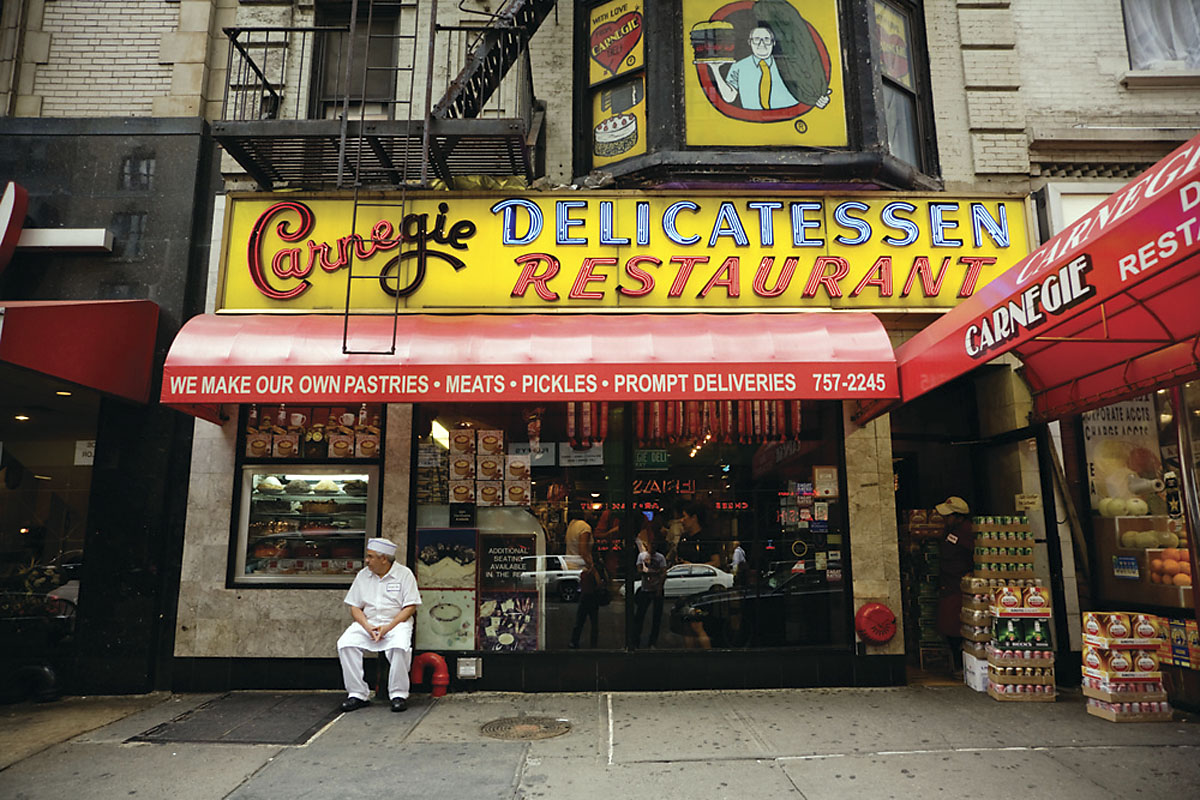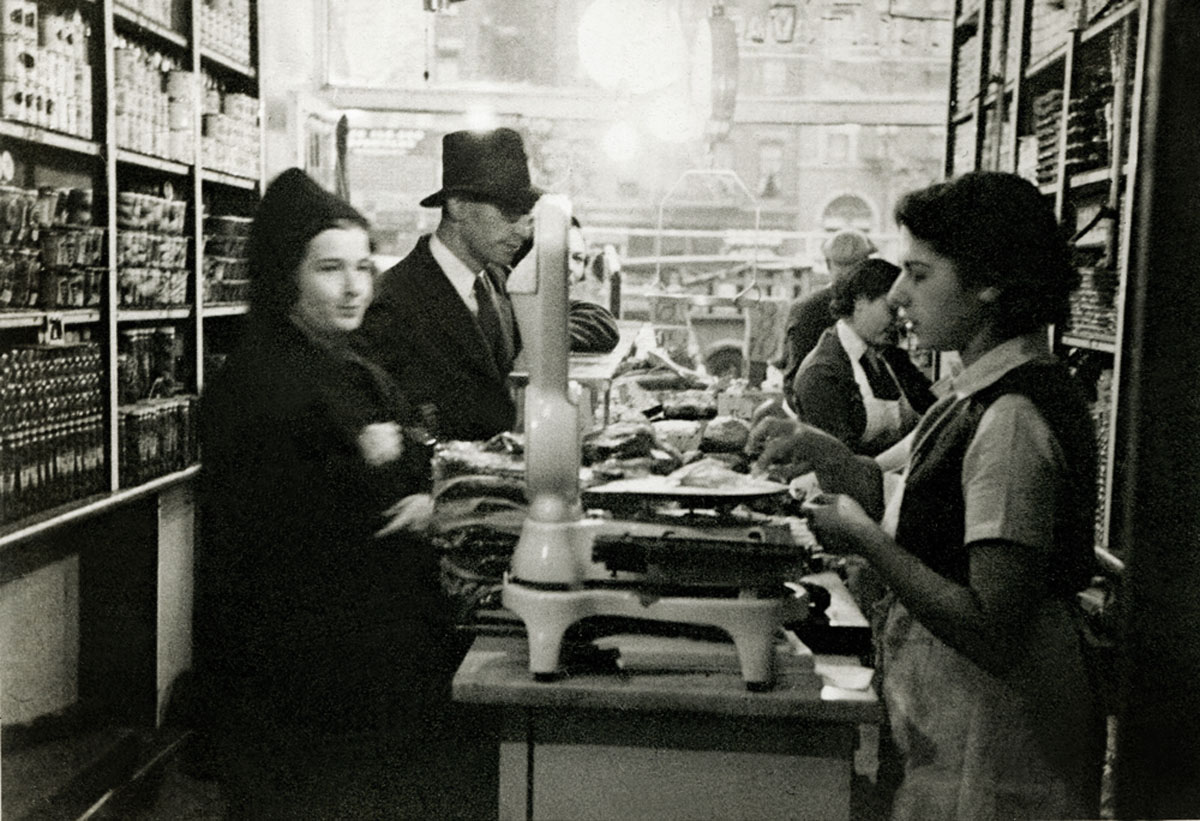Sally finishes, looks at Harry and smiles. (Harry looks back, looking a little uneasy)
Lady from another table: “I’ll have what she’s having.”– When Harry Met Sally, filmed at Katz’s deli on New York City’s Lower East Side, 1989
The New York Historical Society is hosting the exhibit “I’ll Have What She’s Having”, a tribute to the Jewish deli, to which no trip to NYC is complete without. Organised by Los Angeles Skirball Cultural Center, we see the story of the Jewish immigrants from Central and Eastern Europe who brought with them the salt beef, latkas, bagels with cream cheese and lox, sweet new greens and sour pickles, gefilte fish and chicken soup, and well, the whole hamishe spread. This is soul food with a compelling backstory. This is proper nosh.
The exhibition explores the food of immigrants; the heyday of the deli in the interwar period; delis in the New York Theater District; stories of Holocaust survivors and war refugees who found community in delis; the shifting and shrinking landscapes of delis across the country; and delis in popular culture.
In the 1930s, around 3,000 delis operated in the city – today, only about a dozen remain.
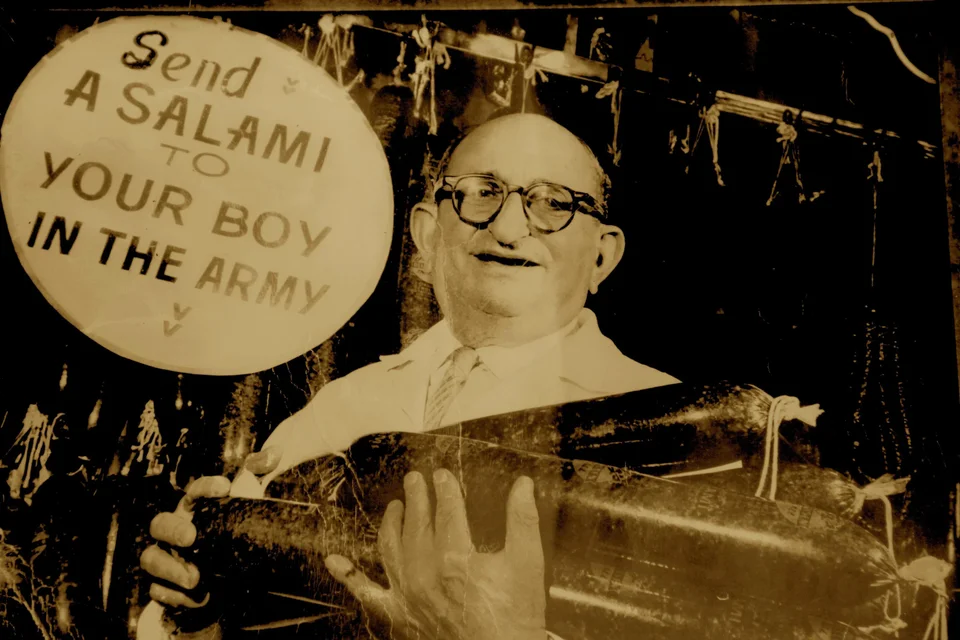
Louis Schwartz, a waiter in the Sixth Avenue Delicatessen who was famous for selling more than $4 million worth of war bonds, claimed to have invented the famous slogan “Send a Salami to Your Boy in the Army,” which became a permanent catchphrase at Katz’s Delicatessen and other delicatessens in the city.
“It’s our great pleasure to present an exhibition on a topic so near and dear to the hearts of New Yorkers of all backgrounds,” says Dr. Louise Mirrer, president and CEO of New York Historical. “‘I’ll Have What She’s Having’: The Jewish Deli tells a deeply moving story about the American experience of immigration – how immigrants adapted their cuisine to create a new culture that both retained and transcended their own traditions. I hope visitors come away with a newfound appreciation for the Jewish deli, and, with it, the story of the United States.”
Highlights include menus, signs and a letter in New York Historical’s Patricia D. Klingenstein Library collection from a soldier fighting in Italy during World War II writing to his fiancée that he “had some tasty Jewish dishes just like home” thanks to the salami his mother had sent.
What makes the 2nd Ave Deli so special? The New-York Historical Society takes a trip to the Midtown landmark to talk to the owner, managers, workers, and customers about the special magic of the decades-old delicatessen where they “prepare the foods that our mothers and grandmothers made.”
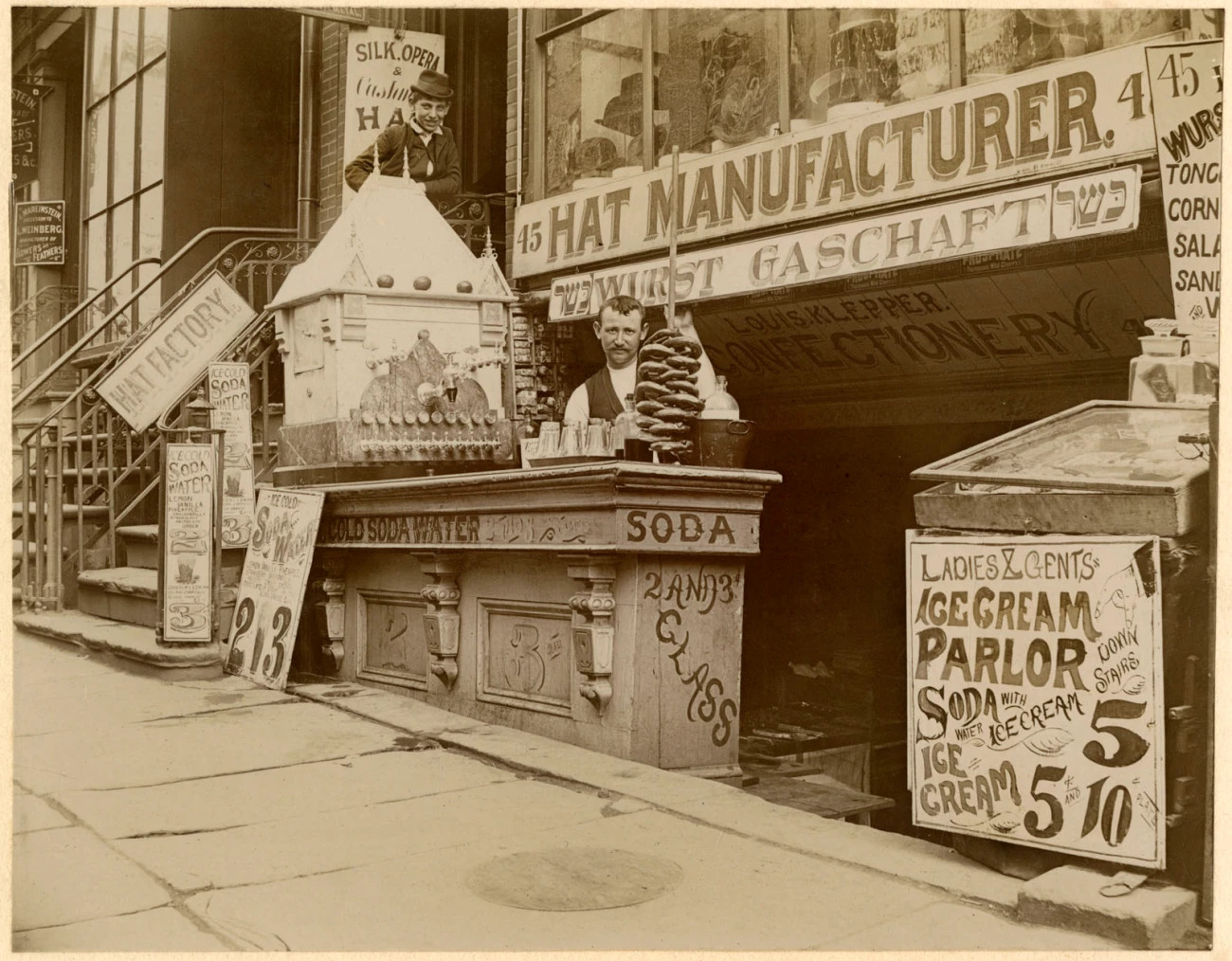
James Reuel Smith (American, 1852-1935) Louis Klepper Confectionary and Sausage Manufacturers, 45 E. Houston Street, New York c. 1900 Patricia D. Klingenstein Library, New-York Historical Society
James Reuel Smith (1852-1935) was an American photographer and amateur historian who worked in the late 19th century to early 20th century. He was known for his documentary photographs of historical springs and wells in New York City before they were buried beneath the concrete of the rapidly growing city. Many of these natural water resources disappeared as the New York municipal water system developed.
Smith’s photographs documented a vanishing way of life in urban America. Drawing and fetching water had been an essential activity of daily life prior to the development of the modern municipal water system. In the 1870s New York City undertook efforts to eradicate the natural open wells and springs as they were perceived to be hazardous to health. The official municipal source for city water was the Croton Aqueduct which was endorsed by the NYC sanitation officers, rather than local neighbourhood wells and springs.
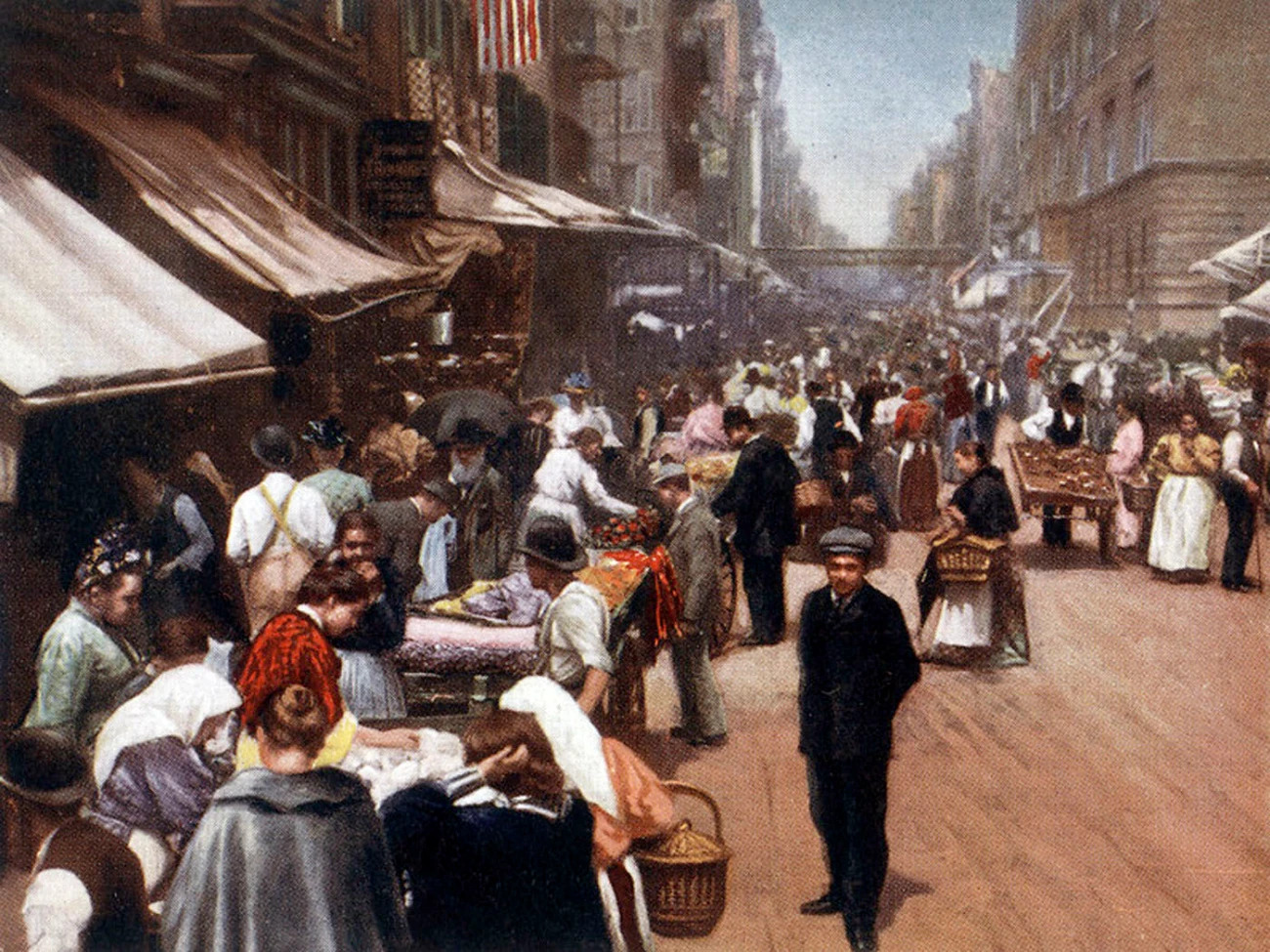
Hester Street, Lower East Side c. 1900 Postcard Patricia D. Klingenstein Library, New-York Historical Society
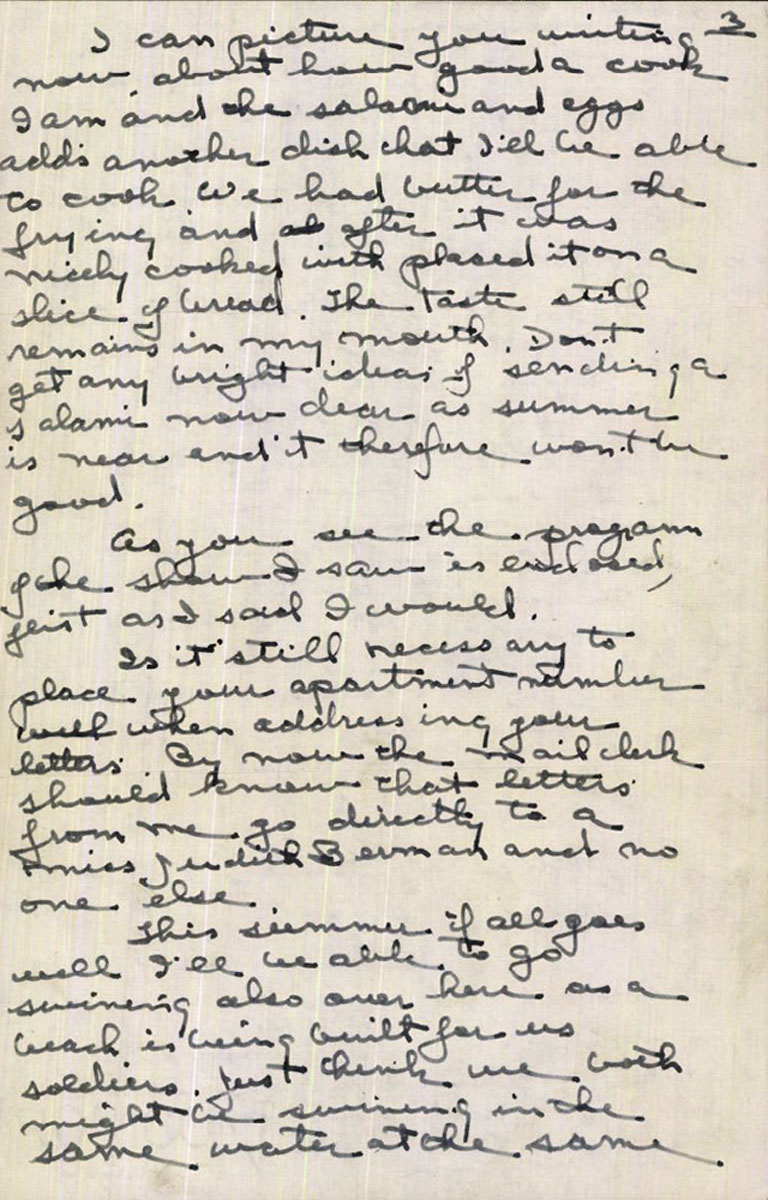
Benjamin Segan (American, 1924-2017)
Letter to Judith Berman, April 23, 1944
Caserta, Italy
Patricia D. Klingenstein Library, New-York Historical Society
Benjamin David “Ben” Segan was born in New York City on 27 August 1924, to Jacob and Lillian Segan, immigrants from Vilnius, Lithuania. Ben attended George Washington High School in Manhattan, where he met his future wife, Judith “Judy” Berman. During his senior year he attended school by night to work in a defense plant by day.
Nineteen-year-old Ben was drafted into the United States Army as a private on 28 April 1943. His initial processing took place at Fort Dix, New Jersey, where he began his correspondence with Judy, writing to her almost daily until he left the service. By mid-May 1943 he was at Camp Croft, South Carolina, where he remained in basic training through late September and to operate radio equipment.
By October 1943 he was sent to Fort George G. Meade, Maryland, and from there shipped to Italy to join the 93rd Armored Field Artillery Battalion. In Europe he served in Italy, southern France, and Germany. During the Battle of Monte Cassino (a.k.a. the Battle for Rome), January-May 1944, he worked in the 93rd’s communication section.
Although he saw combat, Ben refrained from graphic descriptions in writing to his fianceé. Some of his reticence was due to restrictions imposed by the censors. For example, on 7 April 1945, during the liberation of the Buchenwald concentration camp from the Nazis, which he witnessed, Ben wrote, cryptically (in letter 574), “I’ve been extremely busy recently darling, & don’t think it’s so necessary to tell you as you must have a[n] inkling from the latest news reports on our progress.”
The war in Europe ended on 8 May 1945, but Ben was still there as late as November 10th (the date of his last letter in the collection), when he wrote from the French port of Le Havre, unsure of which ship he’d be on or indeed when it would sail.
Ben was honoured with the American Service Medal, the European-African-Middle Eastern Service Medal, the Good Conduct Medal, and the World War II Victory Medal.
Once home he married Judy on 10 March 1946 at Temple Ansche Chesed on Manhattan’s Upper West Side. They raised two children and worked together for many years in New York City’s Garment District.
Anonymous. “Biographical/Historical Note: Guide to the Benjamin Segan Letters 1943-1945,” on the New-York Historical Society website Nd [Online] Cited 26/02/2023
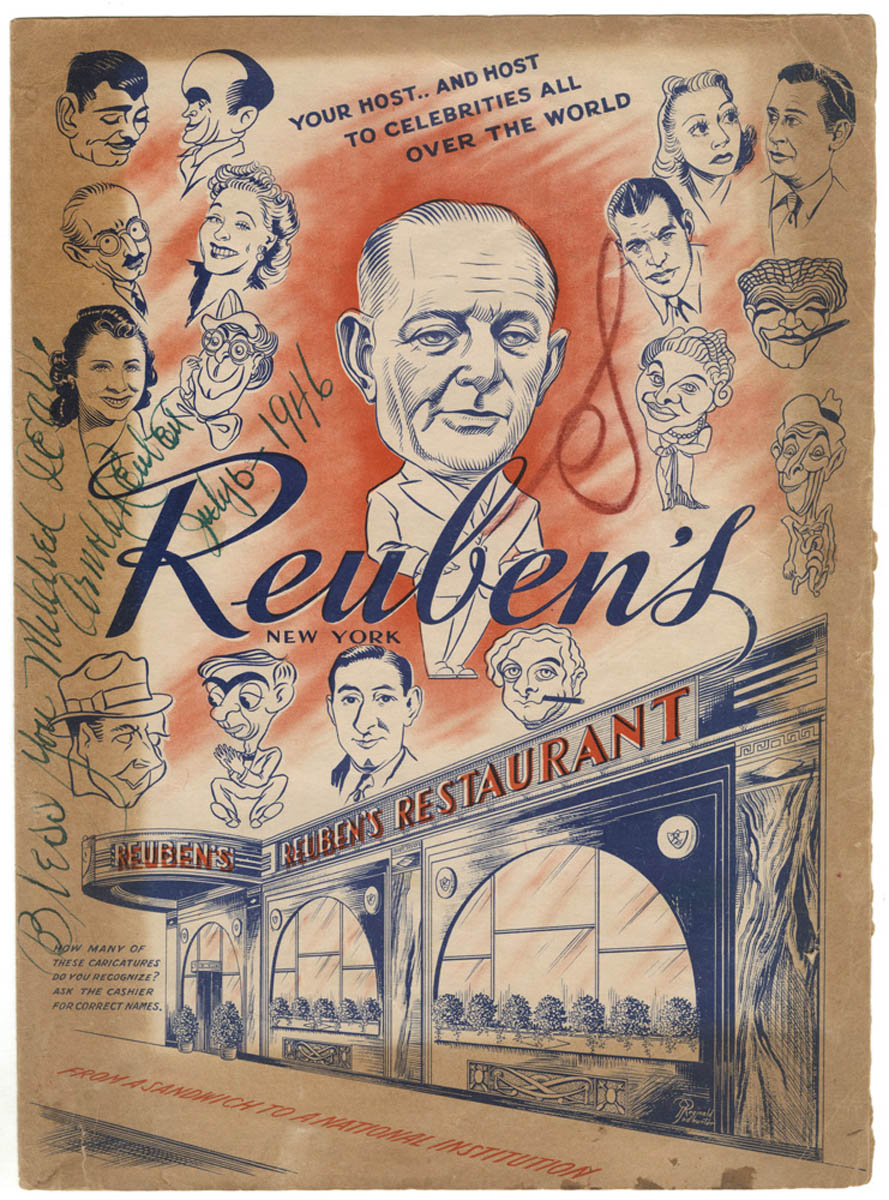
Reuben’s Delicatessen Menu [autographed by Arnold Reuben]
1946 – Patricia D Klingenstein Library, New-York Historical Society
One of fourteen children raised by David and Reisel Honigman in Sosnoweic, Poland, she was 13 when WWII broke out. Rena was liberated from Auschwitz on May 8th, 1945 – her 18th birthday. She learned that her entire family was murdered and came back home to find that the apartment building her family owned had been overtaken. Rena met Harry Drexler in Munich, Germany and they got married on December 25, 1946. After immigrating to the United States in 1951, and settling in Los Angeles, Rena and Harry opened Drexler’s Delicatessen, in North Hollywood, which was the first Kosher deli in the San Fernando Valley. This is her:
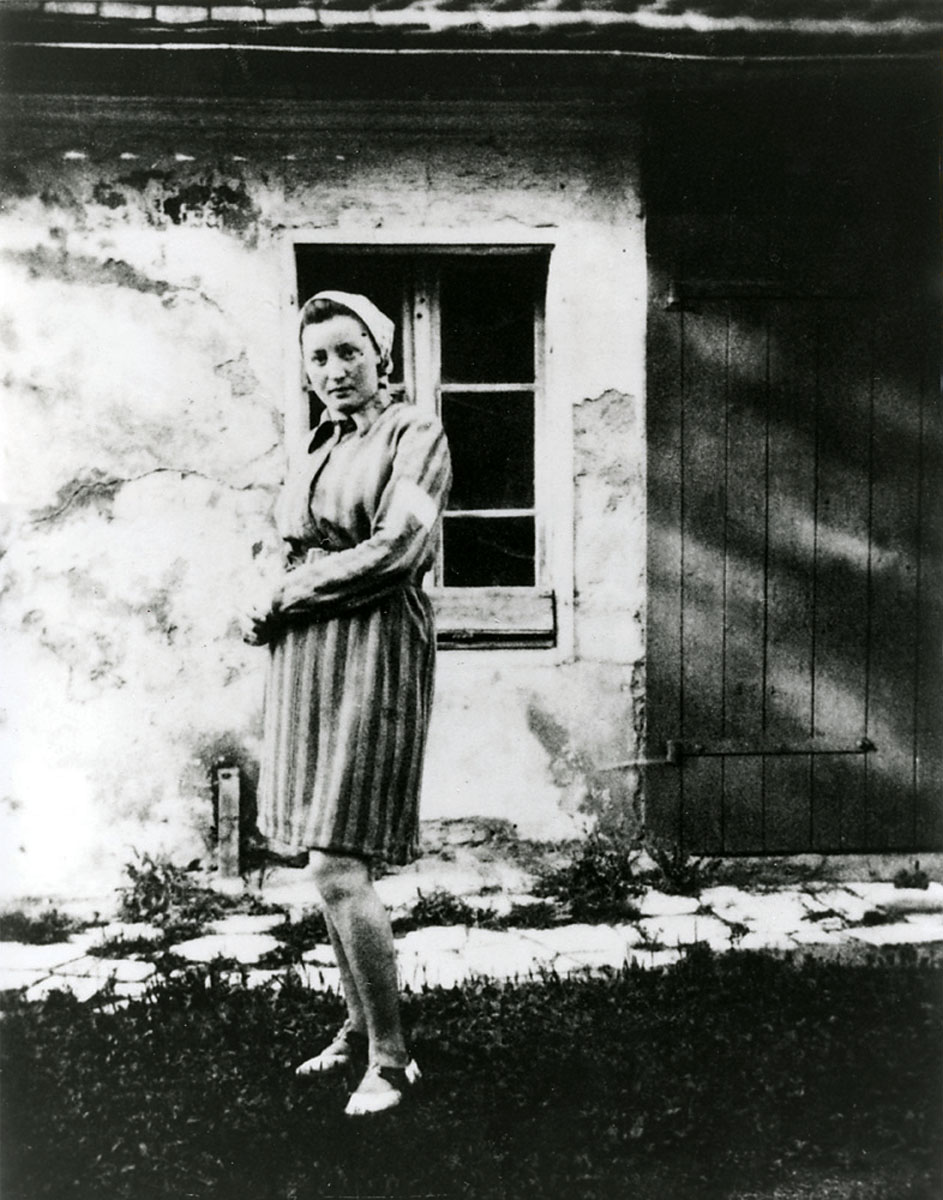
Unknown photographer – Rena Drexler on the day of her liberation from Auschwitz
Poland, 1945
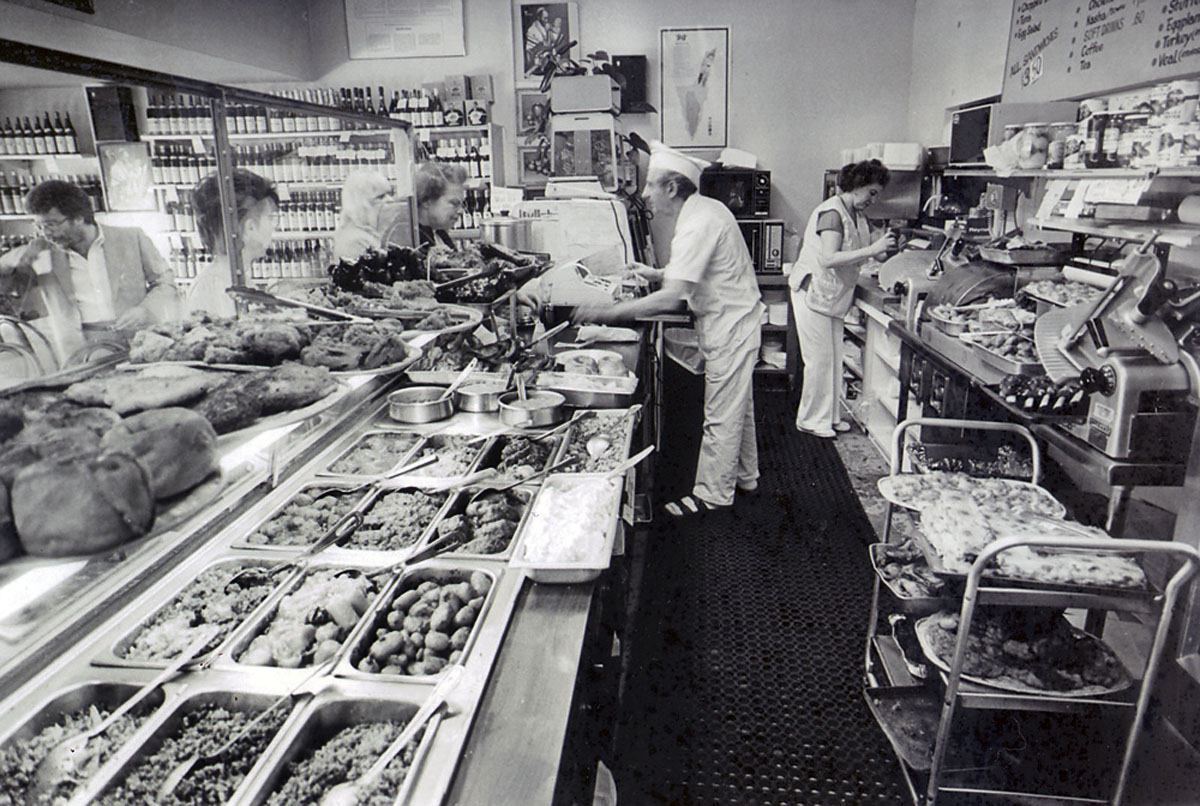
Unknown photographer (American) Rena and Harry Drexler at Drexler’s Deli, North Hollywood, CA c. 1970s
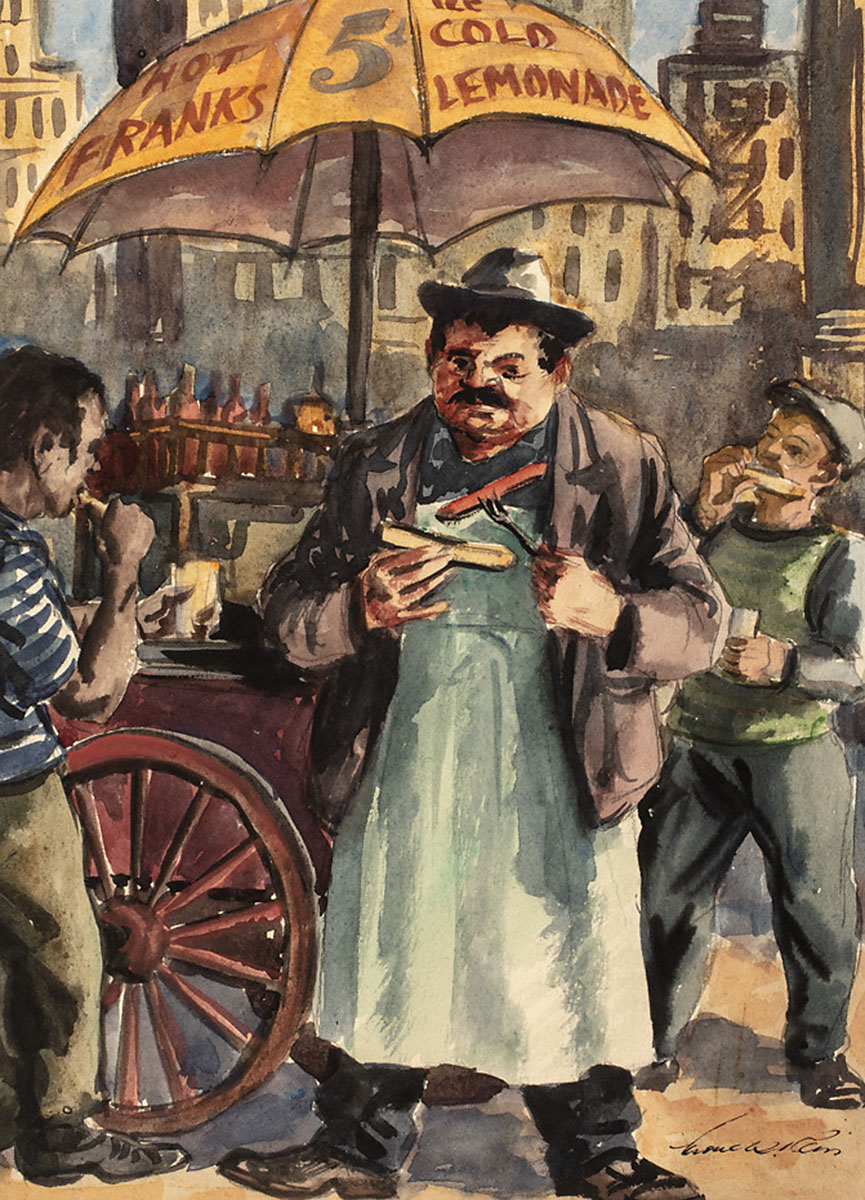
Lionel S. Reiss (1894-1988) was a Polish-American Jewish painter born in Jaroslaw, Poland (then in the Austro-Hungarian Empire), and grew up on the Lower East Side of Manhattan where he studied commercial art. His family had moved to the United States in 1898 when he was four years old. As immigrants to the United States, Reiss’ parents joined the ranks of other Eastern European Jews who were fleeing their native countries at the start of the 20th century. Lionel Reiss’ family settled on New York’s Lower East Side neighbourhood and Reiss himself spent the majority of his life in the city. Reiss worked as a commercial artist for newspapers, publishers, and a motion picture company. Eventually he became art director for Paramount Studios and is credited to be the creator of the Leo the Lion logo of Metro-Goldwyn-Mayer Studios.
Reiss became known for his portraits of Jewish people and landmarks in Jewish history, which he made during his trip to Europe, Africa, and the Middle East in the early 1920s. Being American and Jewish himself, Reiss became fascinated with Jewish life in the Old World. In 1919 Reiss temporarily left the United States to travel to the aforementioned regions, and recorded the everyday life that he encountered in the ghettos. His trip resulted in exhibitions in major American cities.
At the dawn of the Holocaust in 1938, Reiss, who had long returned to the United States, published his book My Models Were Jews, in which he illustratively argued that there is no such thing as a “Jewish ethnicity”, but the Jewish people are rather a cultural group, whereby there is significant diversity within Jewish communities and between different communities in different geographical regions. Reiss was therefore presenting an argument against what he considered to be a common misconception that existed about the Jews. Later works included a 1954 book, New Lights and Old Shadows, which dealt with “the new lights” of a reborn Israel and the “old shadows” of an almost eradicated European Jewish culture. In his last book, A World of Twilight, published in 1972, with text by Isaac Bashevis Singer, Reiss presented a portrait of the Jewish communities in Eastern Europe before the Holocaust.
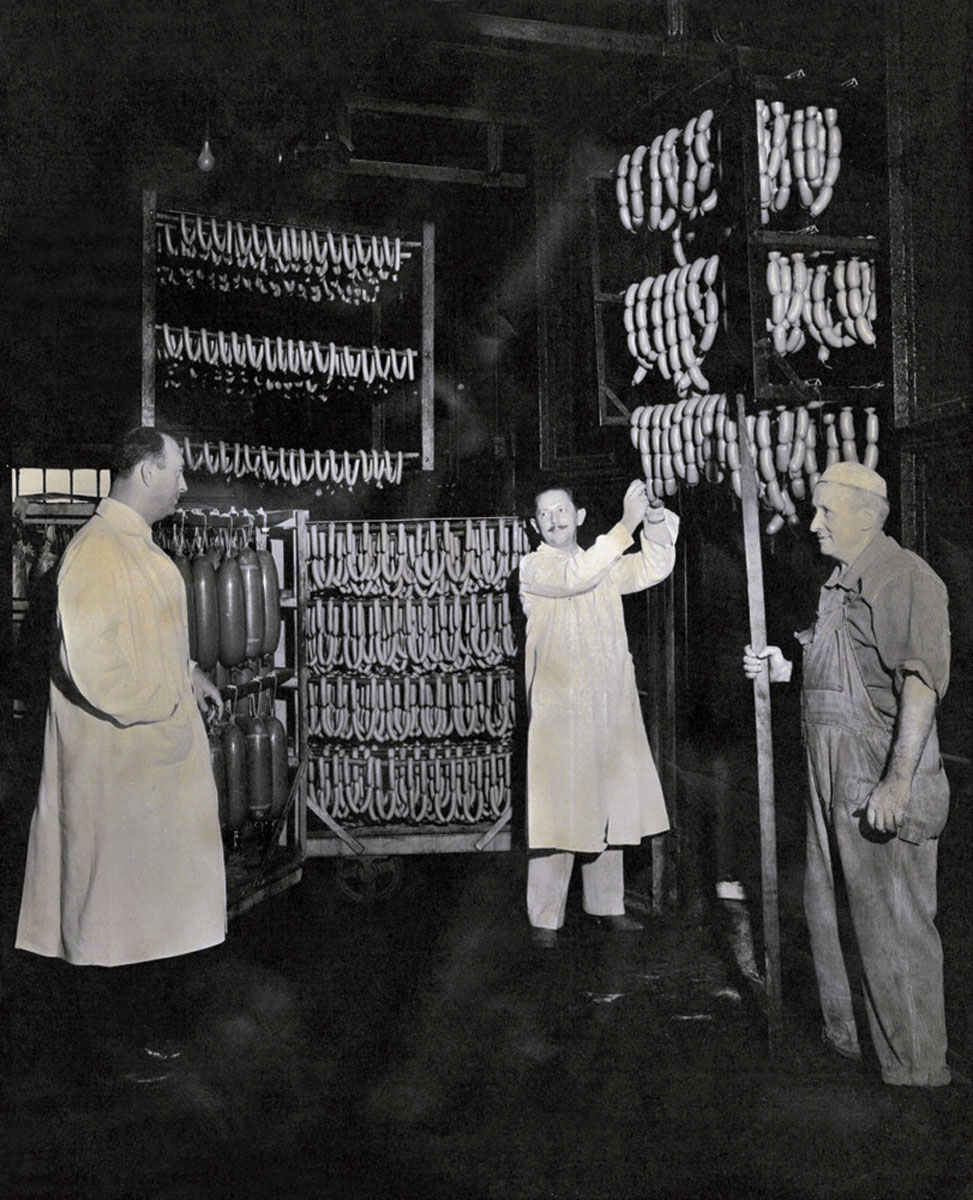
Unknown photographer (American) Vienna Beef Factory, inspecting sausages Chicago, IL c. 1950s Vienna Beef Museum
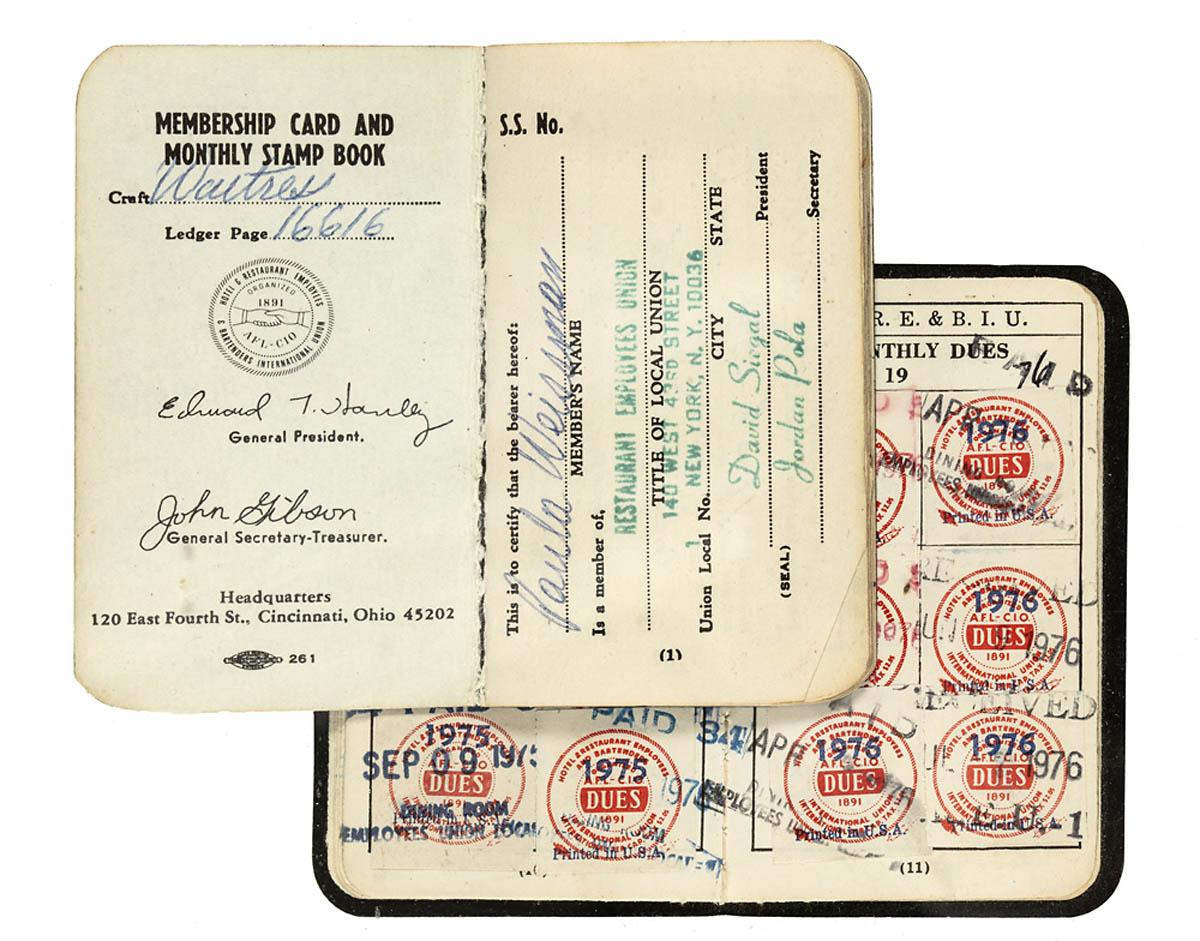
Paula Weissman’s Hotel and Restaurant Employees Union Books 1958-1983 Courtesy of Paula Weissman

Unknown photographer (American) Vienna Beef Factory, curing pastrami Chicago, IL, c. 1950s Vienna Beef Museum
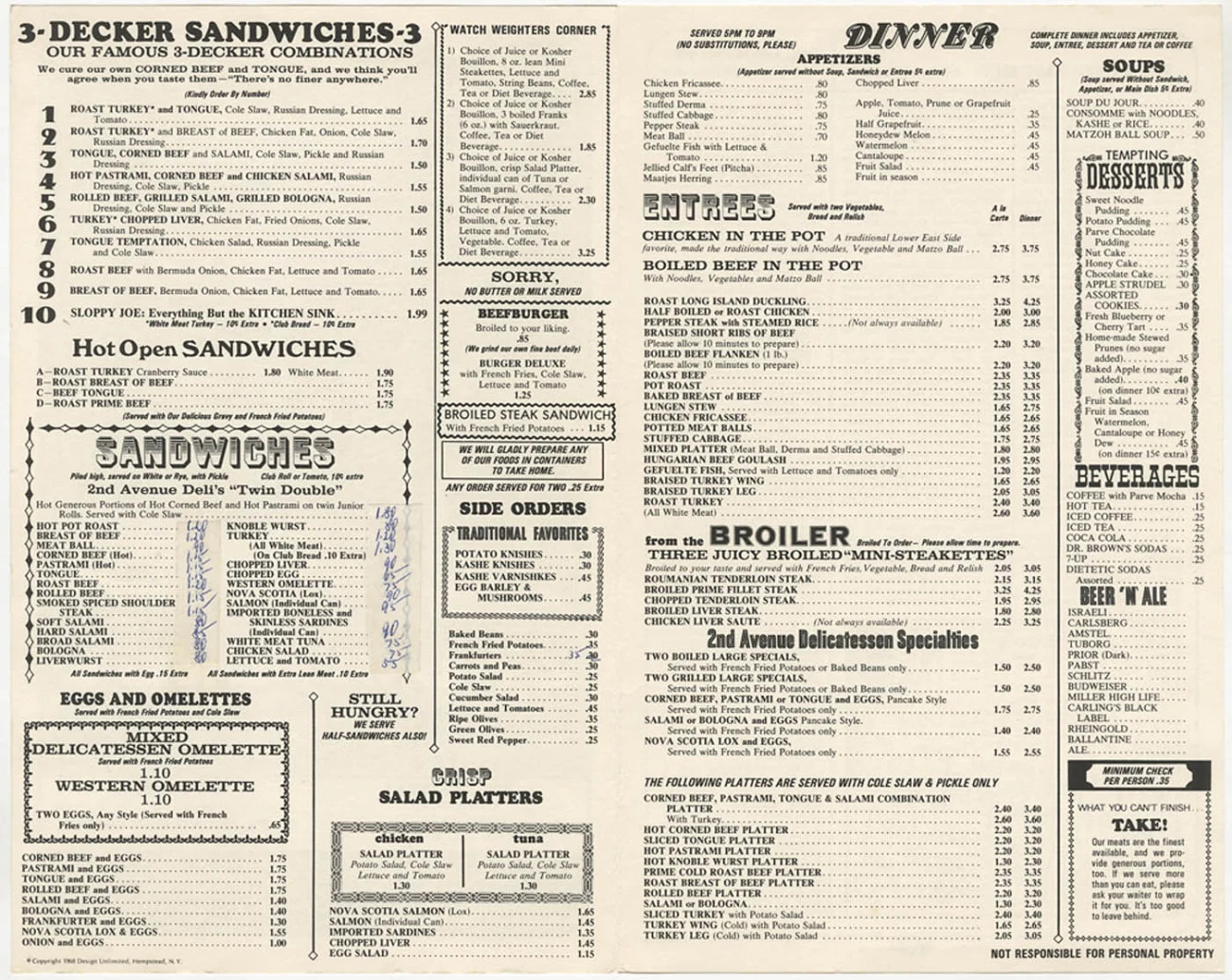
Menu from 2nd Avenue Delicatessen, New-York-City, 1968 – Patricia-D.Klingenstein Library
You don’t have to be Jewish to eat the knishes. I’ll have what they’re having:
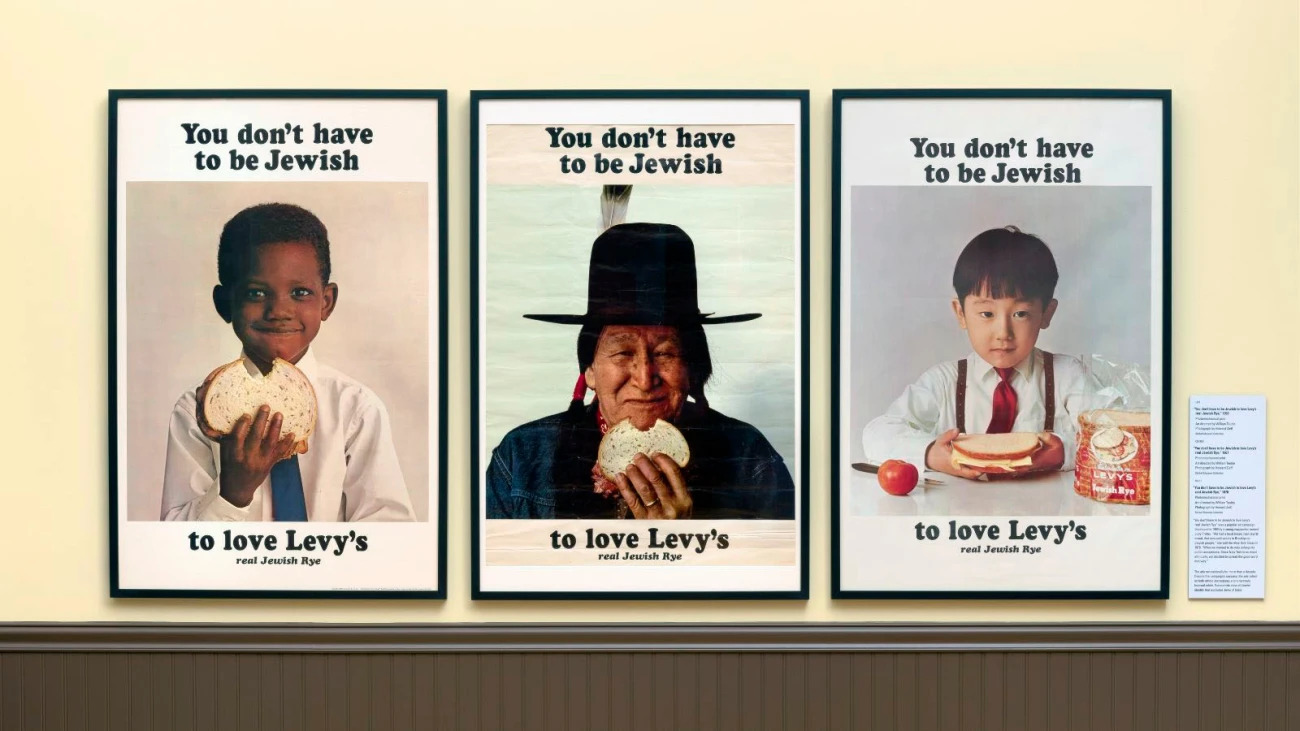
“You don’t have to be Jewish to love Levy’s real Jewish Rye” campaign (1960s).
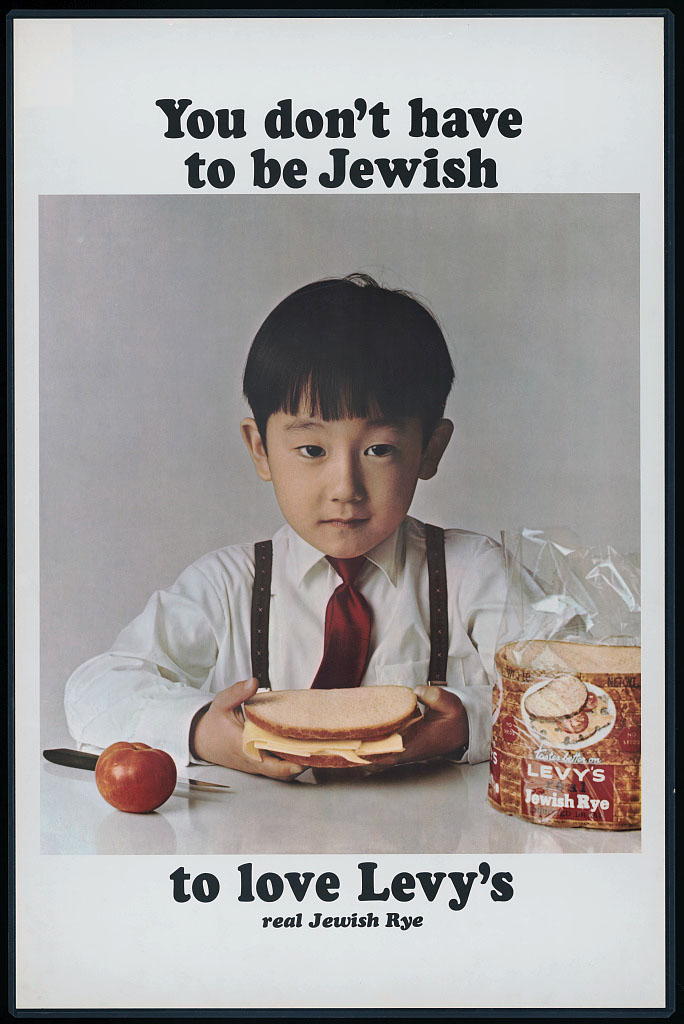
Howard Zieff (photographer) You don’t have to be Jewish to love Levy’s real Jewish Rye [New York – s.n., 1965?] Photomechanical print (poster)- offset, colour Library of Congress Public domain

Howard Zieff (photographer) You don’t have to be Jewish to love Levy’s real Jewish Rye [New York – s.n., 1965?] Photomechanical print (poster)- offset, colour Library of Congress Public domain

Snack at Manny’s Delicatessen
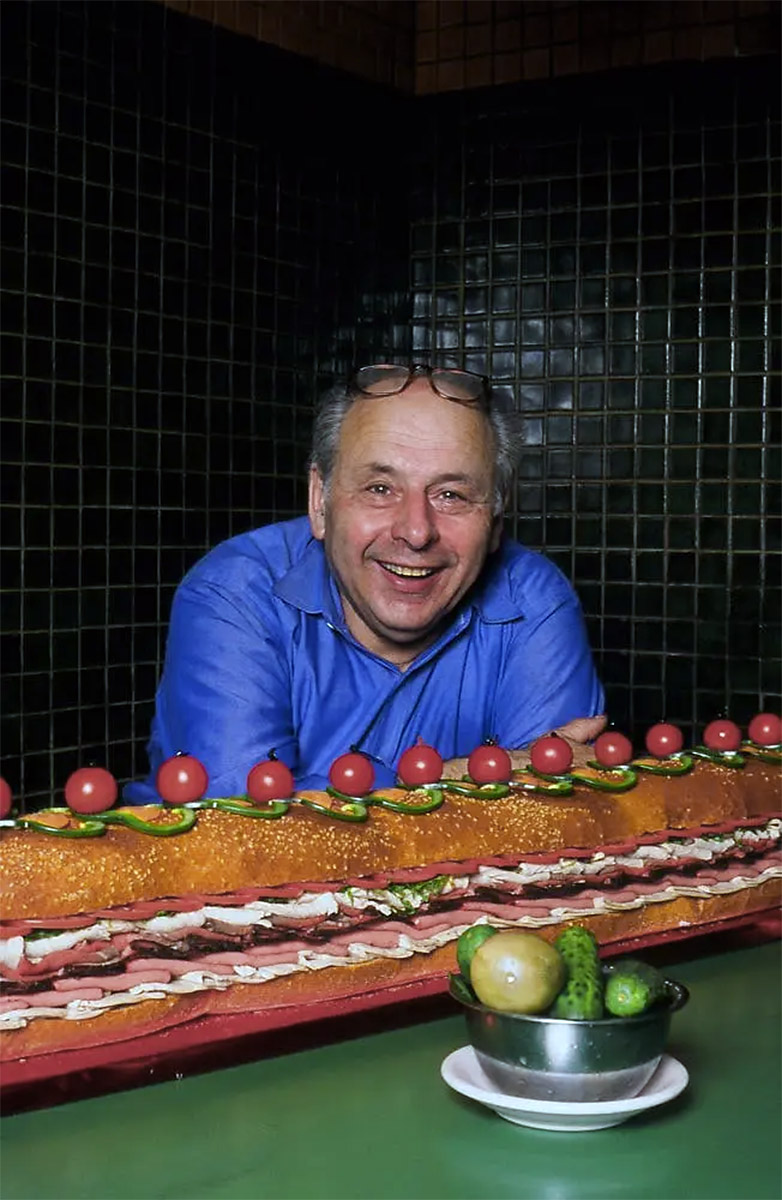
Unknown photographer (American) Abe Lebewohl with a big hero, from the 2nd Ave Deli, New York, NY c. 1990
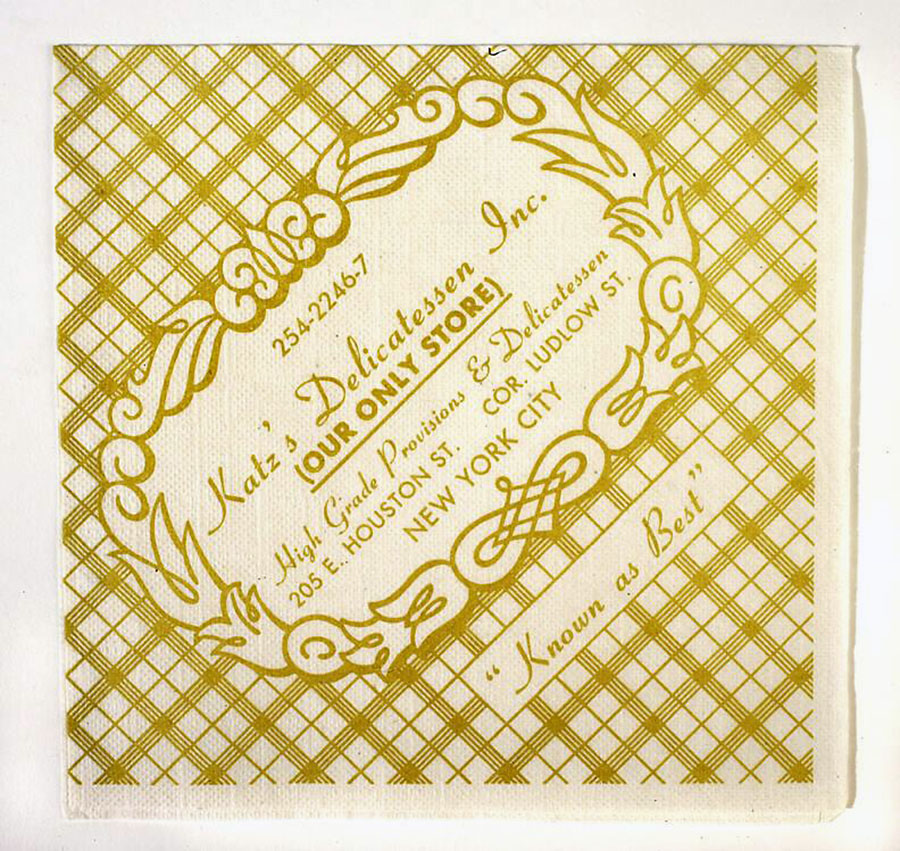
Katz’s Delicatessen Napkin 1980-2000 Paper Overall- 5 × 5 in. (12.7 × 12.7cm) Gift of Bella C. Landauer
So, how did the exhibition get it’s name? You need to ask?
Let’s head over at Katz’s deli in NYC in 1989. We’ll, have what she’s having… (For the record, Sally ordered a simple turkey sandwich on white bread. Harry had the salt beef on rye.)
Would you like to support Flashbak?
Please consider making a donation to our site. We don't want to rely on ads to bring you the best of visual culture. You can also support us by signing up to our Mailing List. And you can also follow us on Facebook, Instagram and Twitter. For great art and culture delivered to your door, visit our shop.
